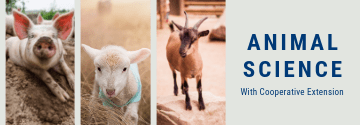I just finished one of the many Zoom meetings I have already participated in this week. It’s quite remarkable really how quickly we have moved ourselves into a completely virtual, online community. The meeting was organized by Future Harvest to discuss the challenges and opportunities of COVID-19 for agriculture, in particular those facing smaller farmers who tend to be more connected to their consumers than our larger commodity production based farmers. Near the start of the meeting, one of the farmer panelists posed this very question, “What’s the silver lining with COVID-19?” With all of the negative news bombarding us 24 hours a day right now, it may not even occur to us that there might be any positive outcomes of a global pandemic. Later in the virtual discussion another farmer commented, “This is the moment we have all been waiting for as local farmers….people are looking to us for food” and I agree.
From my point of view, we are so fortunate to live in a region with a very abundant, diverse, safe and affordable food supply and if you didn’t realize this before, you likely certainly do now. In this time of uncertainty I have witnessed the shock on people’s faces at empty shelves in the big retail stores but in contrast I have seen our local, family owned, small farm markets, butcher shops, and direct to customer food producers step up to keep food on our shelves and in our refrigerators. They are doing so in an organized way, taking care of our older and at risk populations with thought and care. This is an opportune time for direct market farmers to grow their customer base. With the practice of social distancing and people becoming more reluctant to shop in a crowd, short term shortages of some food products due to overbuying, local is rapidly becoming more desirable and the “new normal”.
For some growers who supply restaurants as a large part of their customer base, this could be a scary time, since restaurants have shuttered or at best been reduced to take out only. The good news is there is still time for these types of operations to pivot, according to Beckie Gurley of Calvert’s Gift Farm. The average consumer has slightly different preferences for more basic crops than a restaurant so growers might consider changes in growing plans now. If this human health crisis occurred in the middle of the summer, when crops were already in the ground, it would be too late for farmers to make a change in their “crop portfolio”.
Future Harvest, in cooperation with organizations such Delmarva Grown, the Metropolitan Washington Council of Governments and the Maryland Farmers Market Association, maintains a Find A Farmer and Market Map on their website. The site has seen exponential increases in web traffic since the onset of the coronavirus pandemic. Farmers in the region, including Delaware, can get listed on this site within 24 hours of submitting their information through an online Google form. The form collects such information as type of business, location, food products available, ways to order, acceptable methods of payment and how consumers pick up or receive their order. If you would like to be included on the map, the form to submit your information can be founds here: https://docs.google.com/forms/d/e/1FAIpQLSfEXHdNU0WfQhjmCfBgVE9iIPqd37IEP8Cr1nsIAh5MM1mXcA/viewform
These are unprecedented times and it’s difficult right now to predict exactly what the landscape will look like a few months down the road. I certainly hope the current increased desire to buy local will continue once we as a planet have the current pandemic controlled but without a doubt it is a good time for farmers to make some new friends and new customers.


